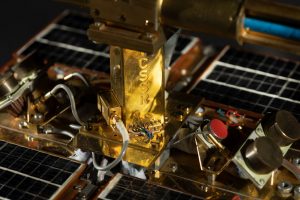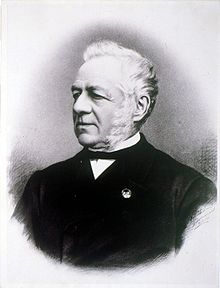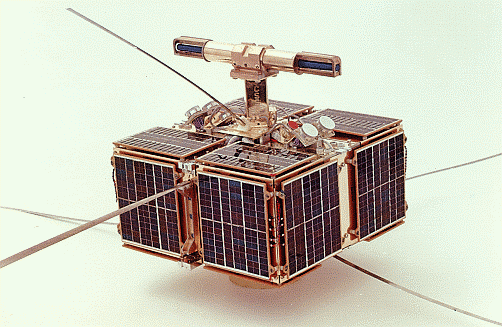October
| MAGION 1, the first Czechoslovak satellite launched on 24 October 1978. MAGION is a name of the serial of small MAGnetospheric and IONospheric satellites manufactured in Czech Republic to be launched as Russian scientific S/C hitch-hikers. |  |
| MAGION 1, the first Czechoslovak satellite launched on 24 October 1978. MAGION is a name of the series of small MAGnetospheric and IONospheric satellites manufactured in Czech Republic to be launched as Russian scientific S/C hitch-hikers. All MAGION satellites were controlled from the control and receiving station Panská Ves. | |
Multi-point Continuous Doppler Sounding (CDS) at IAP was initiated by a temporary measurement campaign in Spain during the solar eclipse of 5 October 2005. Since then, an international CDS network has been established, which includes installations in the Czech Republic, South Africa, Argentina, Taiwan, Slovakia and Belgium (status at the end of 2023). The CDS is used to study traveling ionospheric disturbances, inospheric disturbances caused by seismic events, severe weather, solar and geomagnetic activity, etc.

Zdroj: wikipedia.org
Wladimir Petrovich Köppen (25 September 1846 – 22 June 1940) was a Russian–German geographer, meteorologist, climatologist and botanist. His most notable contribution to science was the development of the Köppen climate classification system, which, with some modifications, is still commonly used. In his classification, he identified five major climatic groups, which correspond with the five main vegetation groups: Tropical rainy climate, Dry climate, Warm temperature rainy climate, Snowy and cold climate, and Polar climate.
 Christophorus Henricus Diedericus Buys Ballot (October 10, 1817 – February 3, 1890) was a Dutch chemist and meteorologist after whom Buys Ballot's law and the Buys Ballot table are named. He was first chairman of the International Meteorological Organization, the organization that would become the World Meteorological Organization.
Christophorus Henricus Diedericus Buys Ballot (October 10, 1817 – February 3, 1890) was a Dutch chemist and meteorologist after whom Buys Ballot's law and the Buys Ballot table are named. He was first chairman of the International Meteorological Organization, the organization that would become the World Meteorological Organization.
Buys Ballot is best known for his accomplishments in the field of meteorology, specifically the explanation of the direction of air flow in large weather systems. Furthermore, he founded the Royal Dutch Meteorological Institute in 1854 and he remained its chief director until his death. He was one of the first to see the need for international cooperation, and in 1873 he organized and became the first chairman of the International Meteorological Organization, a precursor of the World Meteorological Organization (WMO).
Source: "C. H. D. Buys Ballot," Wikipedia, The Free Encyclopedia
| Lewis Fry Richardson (11 October 1881 – 30 September 1953) was an English mathematician, physicist, meteorologist, psychologist, and pacifist who pioneered modern mathematical techniques of weather forecasting, and the application of similar techniques to studying the causes of wars and how to prevent them. He is also noted for his pioneering work concerning fractals and a method for solving a system of linear equations known as modified Richardson iteration.
Richardson's interest in meteorology led him to propose a scheme for weather forecasting by solution of differential equations, the method used nowadays, though when he published Weather Prediction by Numerical Process in 1922, suitable fast computing was unavailable. When news of the first weather forecast by the first modern computer, ENIAC, was received by Richardson in 1950, he responded that the results were an "enormous scientific advance." The first calculations for a 24-hour forecast took ENIAC nearly 24 hours to produce. Source: Wikipedia contributors, "Lewis Fry Richardson," Wikipedia, The Free Encyclopedia, (accessed December 20, 2023). |
 |
The Nobel Peace Prize 2007 was awarded jointly to Intergovernmental Panel on Climate Change (IPCC) and Albert Arnold (Al) Gore Jr. "for their efforts to build up and disseminate greater knowledge about man-made climate change, and to lay the foundations for the measures that are needed to counteract such change". Through their scientific reports, the IPCC has created an ever-broader informed consensus about the connection between human activities and global warming.
 MAGION 1, the first Czechoslovak satellite, was launched on 24.10.1978 to an orbit with a perigee of 406 km and an apogee of about 760 km. It had a mass of only 15 kg and measured plasma waves and particles in the Earth's ionosphere.
MAGION 1, the first Czechoslovak satellite, was launched on 24.10.1978 to an orbit with a perigee of 406 km and an apogee of about 760 km. It had a mass of only 15 kg and measured plasma waves and particles in the Earth's ionosphere.
Atmospheric research within the Czechoslovak Academy of Sciences (CSAS) was originally carried out at the Geophysical Institute. In 1957, the so-called meteorological sector was separated within the Institute and in 1961 it was transformed into an independent Laboratory of Meteorology of the CSAS under the leadership of external director prof. Alois Gregor. The process was completed on 30 October 1963, when the Presidium of the CSAS decided to establish the Institute of Atmospheric Physics of the CSAS, which subsequently started its activities on 1 January 1964.
Panská Ves observatory is located about 60 km north from Prague, close to a small city of Dubá. The observatory serves as receiving station for scientific satellites (all MAGION satellites, CLUSTER satellite) and for various atmospheric and ionospheric ground-based measurements (part of Doppler sounding network, infrasound array, airglow cameras, atmospheric electric field... ).
